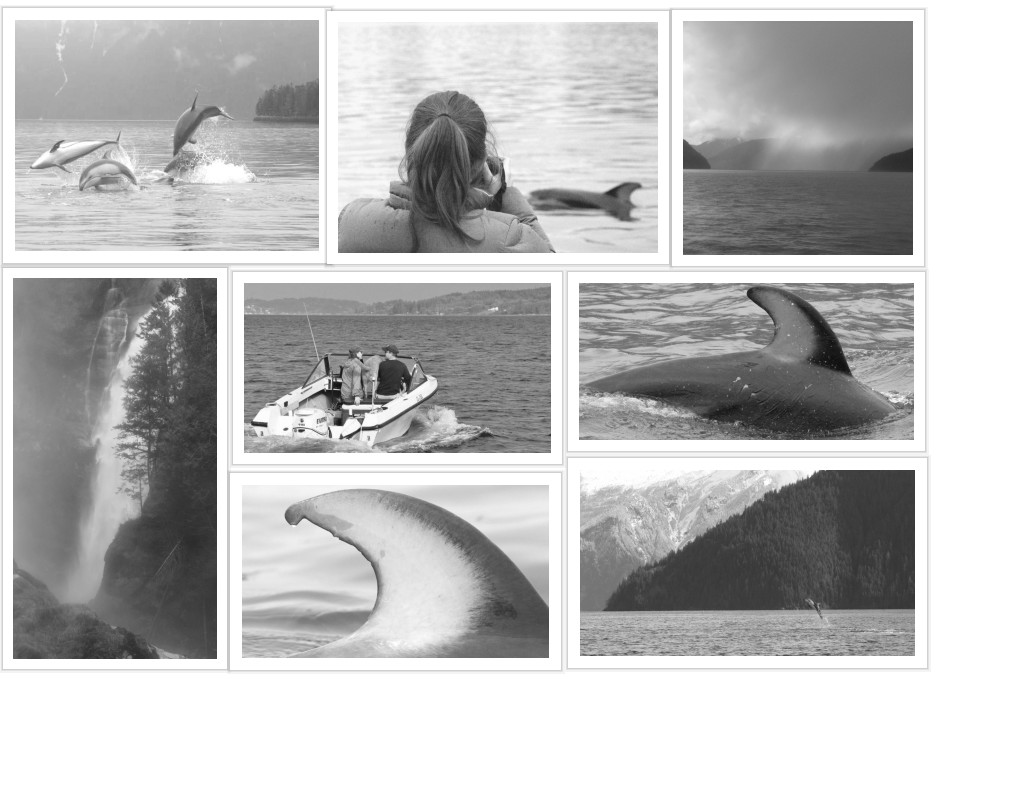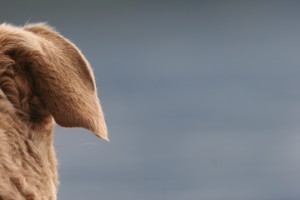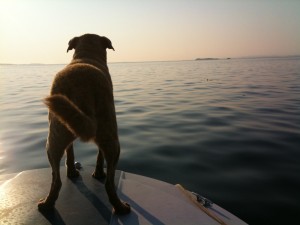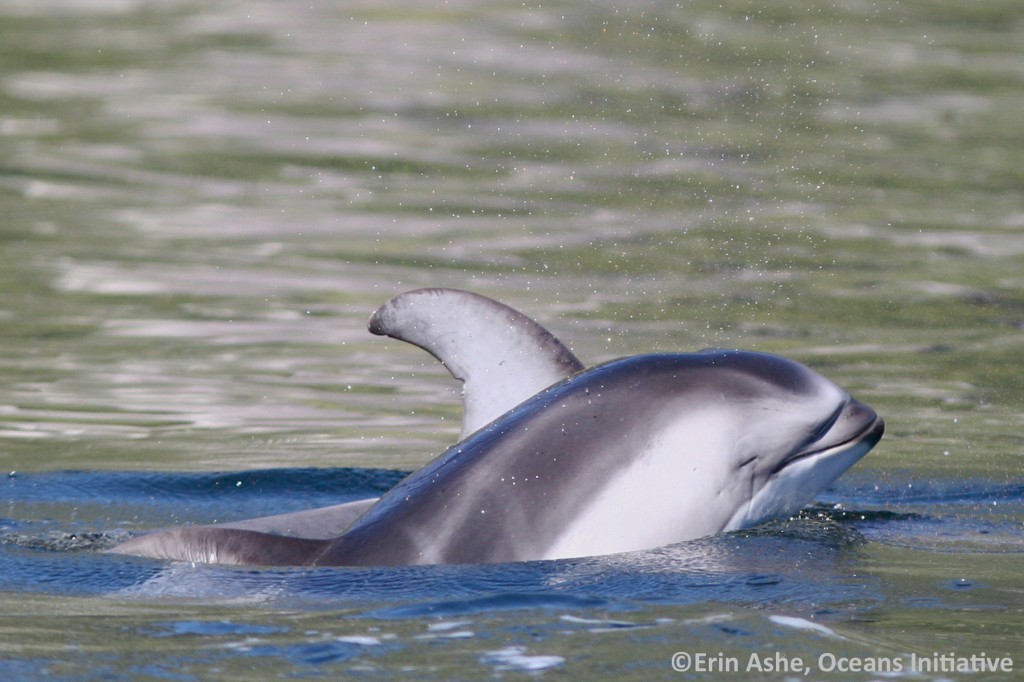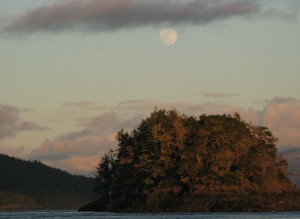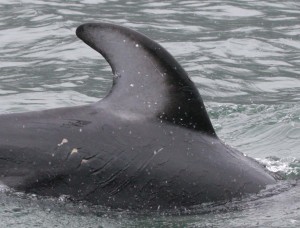It rains a lot in the rainforest. Even when the rain lets up, photographing grey dolphins swimming through grey water under a grey sky has its challenges. Our camera is often pushed to its limits. Out in the snow, rain, mist or fog falls in our little open boat, we dream of sunnier habitat. They do have dolphins in Mexico, after all. But, the dolphins we study here in British Columbia, Pacific white-sided dolphins, have decided this is home. And, while it’s true, they do have closely-related cousins in Mexico, we suspect these dolphins are homebodies.
We’re glad they like it here. Although we travel a lot for work, we’re homebodies too. The thousands of photos we take are helping us figure out where these dolphins call home. With each photograph of each individual dolphin, we have a data point that can help us tell the dolphins’ stories. The more times we capture an individual on film, the more times it enters our catalogue, and skipping over some math, that tells us how well the dolphin population is doing. Do they need protection or is the population doing just fine without our help? It also gives us clues about dolphin movement and whether they remain inshore or go exploring in pelagic waters.
Thanks to the generous support of contributors to the Beyond Miles Aeroplan Program, all the wonderful supporters from our Dolphinpalooza fundraising campaign, and a lot of friends at home, we are conducting another field season this August. We’re pretty anxious to get home, and see what’s changed since the last time we saw the dolphins.

